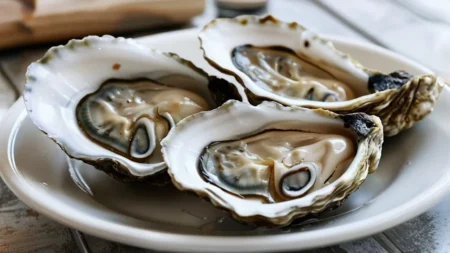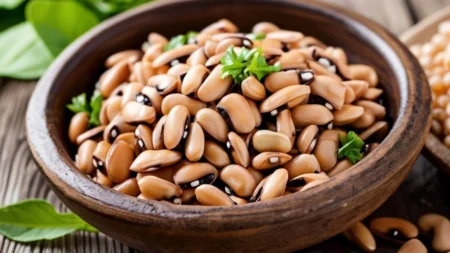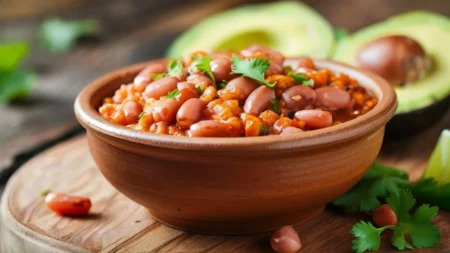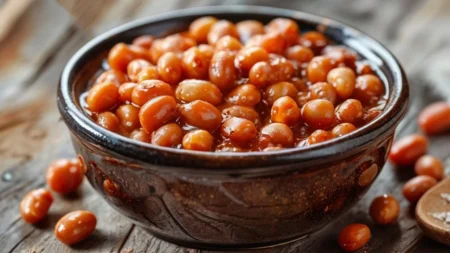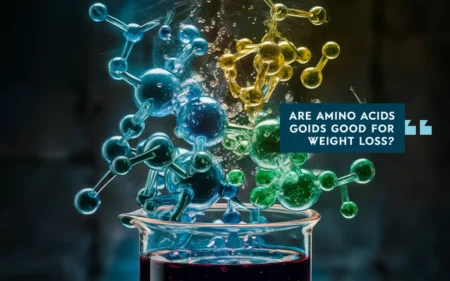HOXC10 is a key player in stopping white fat from turning brown, a change that uses up more energy and keeps us healthy1. It’s mostly found in the fat just beneath our skin. It doesn’t show up as much in brown fat or the fat around our organs1. HOXC10 blocks genes that push white fat to become brown. This was clear in a study where 173 genes in skin fat reacted differently because of HOXC101.
Studies found that HOXC10 shuts down genes usually active in brown fat. This means it’s got a big job in controlling the change from white to brown fat. Notably, the same genes HOXC10 stops are usually on overdrive in fat cells that want to turn brown due to PRDM161. So, HOXC10 seems tightly connected to how our fat can change colors.
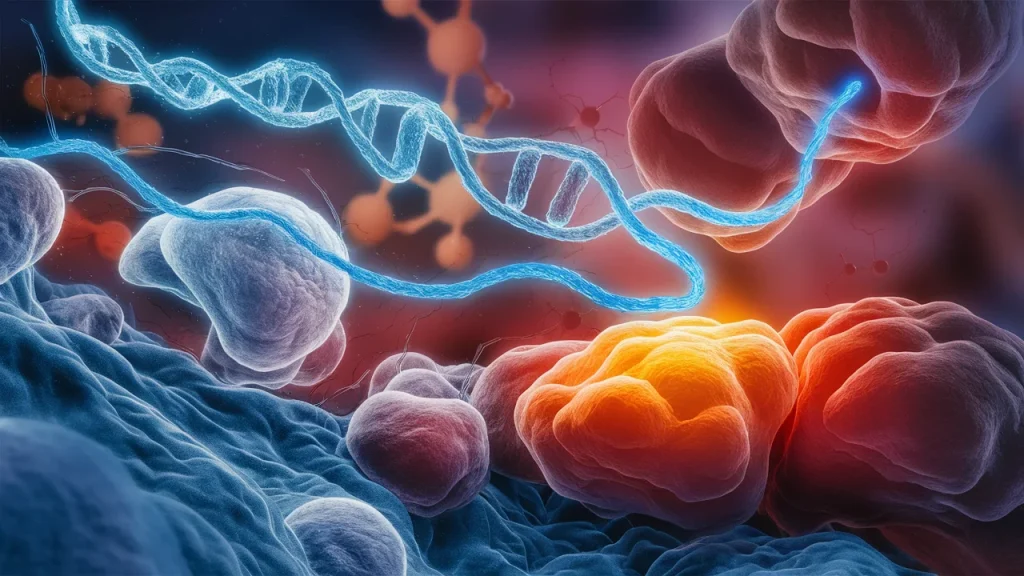
Key Takeaways
- HOXC10 stops white fat from turning brown.
- It’s most active in the fat beneath our skin, less in the brown fat, and least in organ fat.
- It works against genes that make fat brown, including ones usually turned on by PRDM16.
- Stopping HOXC10’s effects helps the body make a special kind of fat cell that burns a lot of energy.
- Learning about HOXC10 might help us find new ways to fight obesity and health problems.
Introduction to HOXC10 and Browning of White Adipose Tissue
HOXC10 plays a big role in making forelimbs in animals2. But, we now know it affects a lot more. It’s linked to growth in breast cancer, thyroid, and cervical cancers3. Studies suggest it might influence body shape, specifically waist-to-hip ratio in people3.
What is HOXC10?
HOXC10 belongs to a group of genes called HOX genes. It’s in the family of HOXC. This gene makes a protein that helps control how we use and store fat3. When HOXC10 works wrong, it can speed up cancer like in lung and prostate3.
The Importance of Browning White Adipose Tissue
Making white fat turn into something like brown fat might help fight diabetes and obesity4. In mice, adding brown fat or beige fat (brown-like fat) has healthy effects4. Humans might have a type of this beige fat. Knowing how to turn white fat to beige is key to fighting weight-related issues4.
This part laid out basics about HOXC10 and fat browning’s health benefits. Coming up, we’ll focus on how HOXC10 stops fat browning and what it means for health outcomes234.
hoxc10 suppresses browning of white adipose tissue
Mechanisms of HOXC10 Action
HOXC10 is a protein that helps control how white fat turns into brown fat5. When HOXC10 is added to cells from white fat, it stops them from becoming brown fat cells1. But, if HOXC10 is not there, the cells can more easily turn into brown fat1.
One way HOXC10 works is by lowering the amount of a protein called PRDM16. PRDM16 helps cells become brown fat. So, by reducing PRDM16, HOXC10 helps keep cells as they are, not turning into brown fat5. When HOXC10 is low, PRDM16 goes up, making cells more likely to turn brown1.
HOXC10 is most active in a certain part of white fat, more than in brown fat or belly fat1. This tells us HOXC10 is important for keeping white fat ‘white’. When HOXC10 is placed in cells, it changes how over a hundred genes work, making them act a bit like brown fat genes1.
These findings reveal the big role HOXC10 plays in stopping white fat from turning into brown fat651. This has huge effects on how our bodies work, which we’ll explore further in the next part.
Physiological Implications of HOXC10 Suppression
Recent studies show HOXC10 plays a crucial role in white adipose tissue7. When HOXC10 is removed in mature fat cells, the tissue turns brown spontaneously. This happens because the genes for browning become more active. The mice without HOXC10 had a higher body temperature, could withstand cold better, and had stable blood sugar levels7.
Effects on Cold Tolerance and Glucose Homeostasis
Being in the cold or taking a certain drug made the knockout mice’s tissues brown more and get warmer7. This shows HOXC10 keeps the tissue from browning too much naturally. It also points to HOXC10’s role in how the body reacts to cold and specific drugs7. Without HOXC10, white tissues can burn more energy and keep blood sugar levels healthy, which suggests a new way to treat metabolic problems by targeting HOXC107.
Surprisingly, cold makes HOXC10 break down in fat cells that are grown in a lab7. This shows yet again how crucial HOXC10 is in the browning process. It’s key when the body faces cold or certain drugs that control metabolism7.
HOXC10, part of the HOXC gene family, helps keep white tissue from browning8. Hiding or deleting HOXC10 lets the tissue become more brown. Studies in mice without HOXC10 showed they had better blood sugar levels and their fat cells expressed more thermogenic genes8.
“Increasing beige adipocytes in white adipose tissue enhances energy expenditure and maintains glucose homeostasis in humans.”9
The results show how big a role HOXC10 plays in body temperature, reaction to cold, and keeping blood sugar levels in check789. They indicate that controlling HOXC10 might lead to new treatments. These could help people with obesity and metabolic disorders by making their body cells burn more energy and control blood sugar better.
Key Findings Implications
Deletion of HOXC10 in mature adipocytes led to spontaneous browning of subcutaneous white adipose tissue, increased basal rectal temperature, enhanced cold tolerance, and improved glucose homeostasis. HOXC10 acts as a gatekeeper of white adipocyte identity and plays a crucial role in regulating white adipose tissue thermogenesis. Targeting HOXC10 could be a promising therapeutic approach to enhance energy expenditure and improve metabolic health.
Cold exposure or ß-adrenergic stimulation further exacerbated the browning and thermogenic effects in HOXC10 knockout mice. HOXC10 is a key negative regulator of the browning process in white adipose tissue, and its degradation is induced by cold exposure, highlighting its importance in regulating the body’s response to metabolic stimuli.
Increased browning of white adipose tissue can boost energy expenditure and serve as a potential therapeutic approach in humans. Manipulating the browning of white adipose tissue, potentially by targeting HOXC10, could be a valuable strategy to enhance energy expenditure and improve glucose homeostasis in individuals with obesity and related metabolic disorders.
The data sets and resources generated during the study are available from the corresponding author upon request8.
Conclusion
The research shows HOXC10 plays a big role in stopping white fat from turning brown10. If we block HOXC10, the white fat starts acting like brown fat. This gives us better ways to fight obesity and other problems1110.
HOXC10 stops certain genes from turning on, genes that make fat cells brown. But, take HOXC10 away, and those cells can brown. This leads to the body making more heat, handling the cold better, and managing sugar well1110. Targeting HOXC10 might be a smart move to make fat fight against obesity and diseases.
This shows us how important HOXC10 is for changing fat and keeping energy in balance. It also offers new paths for fighting the obesity crisis and its health risks1110. Understanding HOXC10 could help make better, personalized ways to tackle obesity worldwide.
FAQ
What is HOXC10?
HOXC10 is a special protein that helps control how our body uses energy. It’s found in a type of fat just under the skin. HOXC10 works to stop certain genes that help change this fat into a different kind.
How does HOXC10 affect the browning of white adipose tissue?
Let’s break it down. When there’s too much HOXC10 in our fat cells, it stops them from turning into ‘brown fat.’ This is a problem, because brown fat helps us burn energy to keep warm. If we don’t have enough brown fat, our body may not work properly.
Looking at mice, we see that when they’re cold, they make less HOXC10 and more brown fat. This is good because it helps them stay warm. So, the amount of HOXC10 and brown fat are like a seesaw – when one is up, the other is down.
What are the physiological implications of HOXC10 suppression?
When mice have lots of HOXC10, they don’t form much brown fat to keep them warm. Also, they can’t use sugar as well. But, if we take away HOXC10 just from their fat cells, it’s like magic. They start to make more brown fat on their own.
This means they stay warmer, feel cold less, and can use sugar better. It sounds simple, but this little change in the fat cells is a big deal for their overall health.
What is the significance of understanding the role of HOXC10 in regulating white adipose tissue browning?
Learning how HOXC10 impacts our fat’s ability to turn into brown fat is crucial. Because when our body can make more brown fat, we burn more energy. This can help fight diseases like diabetes and obesity.
What is the potential therapeutic strategy for targeting HOXC10?
If we could find a way to control HOXC10, we might be able to boost the energy-burning power of our fat. This approach could be a key in treating diseases related to how our body uses energy, like diabetes.
Source Links
https://www.nature.com/articles/emm2016144 – HOXC10 suppresses browning of white adipose tissues – Experimental & Molecular Medicine
https://www.ncbi.nlm.nih.gov/pmc/articles/PMC5336557/ – HOXC10 suppresses browning of white adipose tissues
https://www.frontiersin.org/journals/oncology/articles/10.3389/fonc.2021.684021/full – Frontiers | Role of HOXC10 in Cancer
https://www.mdpi.com/2227-9059/9/1/4JUdGzvrMFDWrUUwY3toJATSeNwjn54LkCnKBPRzDuhzi5vSepHfUckJNxRL2gjkNrSqtCoRUrEDAgRwsQvVCjZbRyFTLRNyDmT1a1boZVTheir Relevance for Medical Applications
https://ouci.dntb.gov.ua/en/works/4zOJekwl/ – HOXC10 suppresses browning of white adipose tissues
https://www.dbpia.co.kr/journal/articleDetail?nodeId=NODE09061790 – DBpia
https://www.ncbi.nlm.nih.gov/pmc/articles/PMC8385616/ – HOXC10 Suppresses Browning to Maintain White Adipocyte Identity
https://europepmc.org/article/med/28186086 – HOXC10 suppresses browning of white adipose tissues. – Abstract
https://www.mdpi.com/1422-0067/22/11/5906 – Thermogenic Fat: Development, Physiological Function, and Therapeutic Potential
https://www.sciencedirect.com/science/article/abs/pii/S0890850819303111 – HOXC10 promotes proliferation and attenuates lipid accumulation of sheep bone marrow mesenchymal stem cells
https://www.ncbi.nlm.nih.gov/pmc/articles/PMC5818365/ – The dark side of browning






